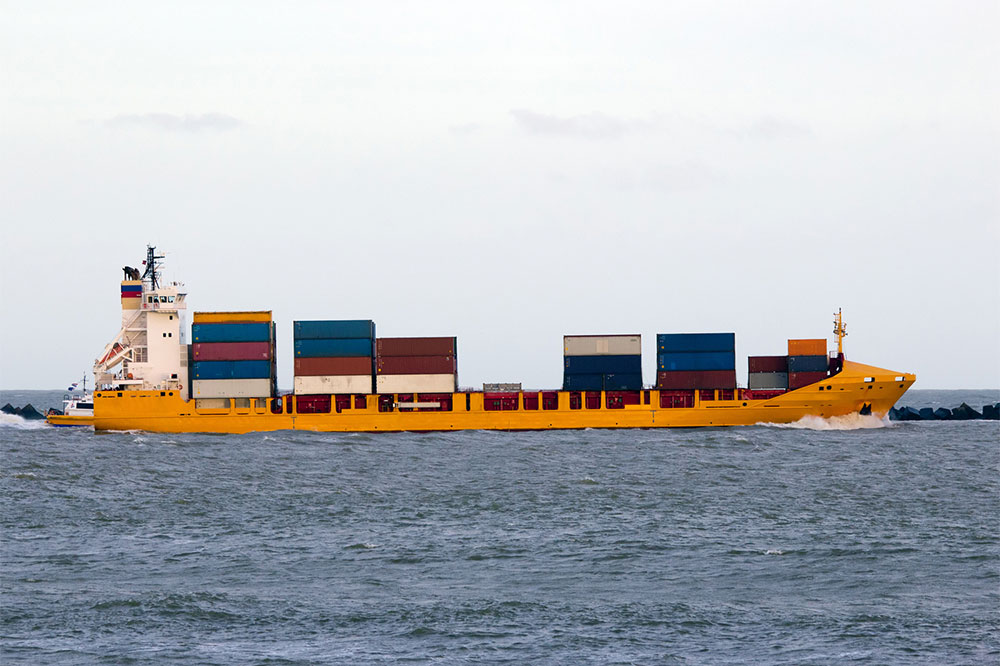Comprehensive Insights into Sea Freight Transportation: Advantages, Challenges, and Sustainable Practices
Sea freight transportation is essential for global trade due to its cost efficiency and capacity benefits. This comprehensive guide explores its advantages, challenges like delays and environmental impacts, and future sustainability practices. Learn how maritime shipping drives international commerce while evolving towards greener, safer operations for a sustainable future.

Comprehensive Insights into Sea Freight Transportation: Advantages, Challenges, and Sustainable Practices
Sea freight, also known as maritime shipping or waterborne transportation, plays a crucial role in the global logistics network by enabling the movement of goods and passengers across oceans and seas. As one of the most cost-efficient methods for carrying large volumes over long distances, water transport continues to be the backbone of international trade. Covering more than 70% of the Earth's surface, water routes offer a practical alternative to land-based and air freight options, providing a reliable and scalable means for global commerce. Despite its advantages, sea freight has certain limitations and environmental considerations that companies, policymakers, and stakeholders must understand and address.
Advantages of Sea Freight Transportation
Cost-Efficiency and Economical Nature: One of the primary benefits of sea freight is its remarkable cost-effectiveness. Transporting goods via ships typically incurs lower costs compared to air or road transport, especially when dealing with bulky, heavy, or voluminous cargo. This economic advantage stems from shared operational expenses among multiple clients and the inherently lower fuel consumption per ton-mile associated with maritime vessels. Shipping companies benefit from economies of scale by deploying large ships capable of carrying vast quantities of cargo, which significantly reduces per-unit transportation costs. This affordability makes sea freight the preferred choice for international trade, helping businesses reduce logistics expenses and maintain competitive pricing in global markets.
Capacity and Flexibility: Modern cargo ships can accommodate a diverse range of cargo types and sizes—from lightweight packages to heavy machinery, industrial equipment, and trucks. This adaptability allows for the efficient movement of extensive volumes of goods, including bulk commodities like oil, coal, and agricultural products. Additionally, the use of standardized containers enhances loading and unloading efficiency, ensuring cargo safety during transit. Sealed containers provide a secure environment, minimizing the risk of theft and damage. Large vessels can balance the transportation of different cargo types, facilitating international trade in various industries.
Global Connectivity and Trade Facilitation: Sea freight acts as the lifeline of global commerce by connecting markets worldwide through an extensive network of ports and shipping routes. Over 70% of global trade by volume is handled via maritime ports, underscoring their fundamental importance. This mode of transportation enables countries to access resources, raw materials, and finished products from different continents, fostering economic growth and development. Water routes often provide smoother and faster movement for large shipments compared to land freight and air transportation, especially when transferring commodities between ships, trucks, and trains—thanks to containerization and port infrastructure interoperability.
Environmental Advantages of Maritime Shipping
Although maritime shipping does contribute to environmental pollution, it is generally more environmentally efficient than air or road transportation in terms of greenhouse gas emissions per ton-mile. This efficiency makes sea freight a relatively more sustainable choice for bulk and long-distance cargo movement. Nonetheless, the industry is striving to implement greener practices, such as the adoption of cleaner fuels and eco-friendly ship designs, to reduce its ecological footprint.
Challenges and Disadvantages of Sea Freight Transportation
Slower Transit Times: While cost-effective, sea freight is characterized by extended transit durations, often taking weeks to reach destination ports. This slow pace makes maritime shipping unsuitable for time-sensitive deliveries or perishable goods requiring rapid transit. Companies relying on just-in-time inventory or urgent shipments might need to supplement sea freight with faster transportation modes.
Potential for Delays: Sea routes are susceptible to delays caused by unpredictable weather conditions, storms, or unforeseen operational disruptions such as port congestion, labor strikes, or vessel bottlenecks. These factors can extend transit times and impact supply chains, especially when schedules are tight or deliveries are critical.
Challenging Cargo Tracking: Unlike airline tracking systems that offer real-time updates, maritime routes often feature less precise tracking due to long voyage durations, route changes, and variable schedules. While GPS and satellite tracking have improved visibility, monitoring ship movements remains more complex, complicating logistics planning and customer communication.
Risks of Maritime Accidents and Security Threats: Maritime transportation faces inherent risks, including accidents like collisions, capsizing, or sinking, which threaten cargo integrity and crew safety. Additionally, threats such as piracy, terrorist activities, and political instability in certain regions add security concerns that can compromise shipments and personnel.
Extended and Complex Supply Chains: Sea freight often requires subsequent land transportation—trucks or trains—to reach final destinations, increasing overall delivery times and logistical complexity. This multi-modal process adds layers of coordination and potential delays, demanding robust planning to optimize supply chain efficiency.
Variable Costs and Market Fluctuations: Shipping costs are influenced by multiple factors, including fluctuating fuel prices, seasonal demand, currency exchange rates, and vessel availability. Ports may impose duties, tariffs, and taxes upon arrival, further affecting the total cost of transportation. These variables can lead to unpredictable shipping rates, complicating cost management for businesses.
Environmental Concerns and Sustainability Challenges:
Despite its efficiency, maritime shipping has environmental impacts that warrant attention:
Air Pollution: Shipping exhaust emissions release greenhouse gases like CO2 and pollutants such as sulfur oxides (SOx) and nitrogen oxides (NOx), contributing to climate change and air quality issues.
Water Pollution: Discharges from ballast water, oil leaks from vessels, and accidental spills can severely harm marine ecosystems. The introduction of invasive species through ballast water discharge poses ecological risks.
Underwater Noise Pollution: Noise generated by ship engines and propellers disturbs marine life, especially species relying on sound for navigation, communication, and hunting.
Oil Spills and Environmental Disasters: Accidental oil leaks can cause catastrophic environmental damage, with long-lasting effects on water quality and marine biodiversity.
In response to environmental concerns, the maritime industry is embracing innovative practices, including adopting alternative fuels like liquefied natural gas (LNG), improving hull designs for fuel efficiency, and implementing stricter regulations to minimize ecological impacts.
Future Outlook and Sustainable Development:
As global trade continues to grow, the importance of sustainable maritime practices becomes increasingly critical. Innovations such as electric vessels, wind-assisted propulsion, and digitalization for better route optimization promise to reduce environmental footprints and enhance safety. Governments and industry stakeholders are working together to establish standards and incentives that promote greener shipping, ensuring the resilience and sustainability of sea freight transportation for future generations.
In conclusion, sea freight remains indispensable to the global economy, supporting numerous industries and millions of jobs worldwide. While challenges like environmental impact, slow transit times, and safety risks exist, ongoing technological advances and regulatory reforms aim to make maritime shipping safer, greener, and more reliable. Embracing these developments will ensure that sea freight continues to facilitate international trade effectively and sustainably in the years to come.





